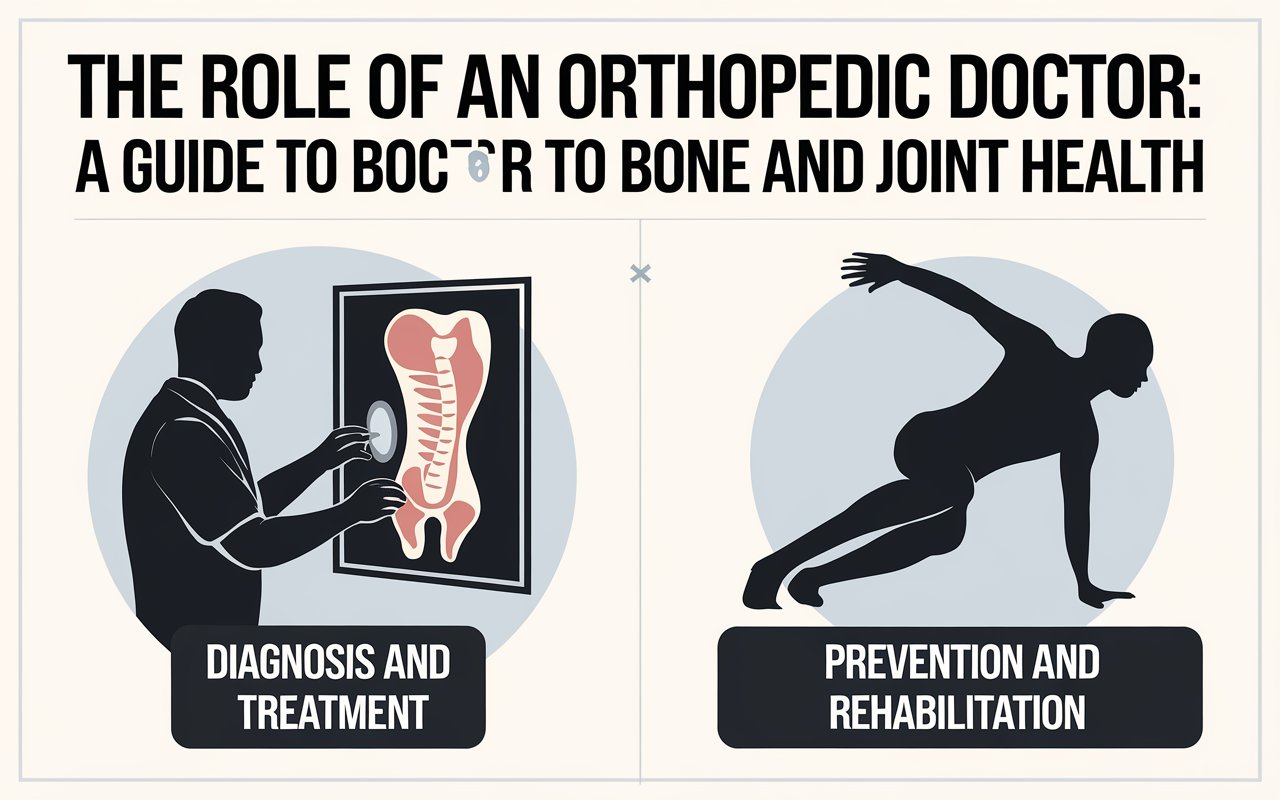Introduction to Orthopedic Medicine
Orthopedic doctors, also known as orthopedists, specialize in diagnosing, treating, and preventing musculoskeletal conditions. These conditions cover a broad spectrum, including fractures, dislocations, chronic joint pain, and degenerative diseases. Their expertise extends to surgical and non-surgical treatments to maintain and restore mobility and overall bone and joint health. For those seeking specialized care, finding an experienced orthopedic doctor in Tulsa can significantly enhance the quality of life by addressing specific health issues effectively. This article sheds light on orthopedic doctors’ significant role in healthcare, providing a comprehensive guide to bone and joint health.
Orthopedists work diligently to ensure patients maintain an active lifestyle, free from pain and discomfort. Their training involves extensive education in the musculoskeletal system, making them experts in the functions and disorders of bones, joints, muscles, ligaments, and tendons. This specialization is crucial because the musculoskeletal system supports your body’s structure and allows movement.
Common Conditions Treated by Orthopedic Doctors
Orthopedic doctors treat many conditions that can affect anyone regardless of age or activity level. Some of the most common conditions they manage include:
- Arthritis: A condition causing inflammation in one or more joints, resulting in pain and stiffness that can worsen with age.
- Fractures: Broken bones resulting from accidents, falls, or high-impact trauma that require precise realignment and stabilization.
- Sports Injuries: Injuries sustained during physical activities, such as sprains, strains, and ligament tears, need accurate diagnosis and tailored treatment plans to ensure a full recovery.
- Back Pain: A common ailment often resulting from muscle or ligament strain, bulging or ruptured discs, arthritis, or skeletal irregularities.
- Carpal Tunnel Syndrome: Squeezing the median nerve in the wrist causes a lack of feeling, pins and needles sensations, and decreased strength in the hand and arm.
Each condition requires a specific treatment approach tailored to the individual’s needs and lifestyle. Accurate diagnosis and early intervention by an orthopedic doctor can significantly improve patients’ outcomes and quality of life.
When to See an Orthopedic Doctor
Recognizing when to seek the expertise of an orthopedic doctor is crucial for effective treatment and optimal recovery. Some signs indicating you might need to consult an orthopedist include:
- Persistent joint or bone pain that doesn’t improve with rest or over-the-counter medications.
- Swelling or bruising that doesn’t subside within a few days.
- Struggling with basic tasks because of pain, stiffness, or inability to move.
- Chronic sports injuries that limit your performance or return after rest.
- Limited movement in any joint can hinder your ability to move freely and complete daily activities.
Failure to pay attention to these symptoms may result in more severe issues and extended healing periods. Prompt consultation with an orthopedic doctor ensures that underlying problems are identified and treated early, preventing further damage and improving long-term outcomes.
Diagnostic Tools and Techniques
Orthopedic physicians utilize different diagnostic instruments to identify and evaluate musculoskeletal problems accurately. These advanced methods include imaging techniques such as X-rays, MRIs, CT scans, physical examinations, and thorough medical history assessments. Quickly identifying the issue is essential for effective treatment, and these tools are vital in pinpointing the exact cause of symptoms.
X-rays can show bone fractures, joint dislocations, and arthritis, whereas MRI scans offer detailed images of soft tissues like muscles, ligaments, and tendons. CT scans use X-ray images from various directions to produce detailed cross-sectional images of bones and soft tissues, providing a comprehensive analysis. Physical examinations assist medical professionals in evaluating your flexibility, muscle strength, and reflex reactions, giving them information about your general musculoskeletal well-being.
Treatment Options Available
The choices for treating musculoskeletal issues range from non-operative approaches like physical therapy and medication to surgical interventions such as joint replacement or arthroscopy. The treatment is chosen based on the type and severity of the illness, the patient’s overall health, and personal preferences.
- Non-Surgical Treatments: Non-surgical treatments usually consist of physiotherapy, medications, and adjustments in one’s lifestyle. Physical therapy aims to enhance muscle strength and flexibility through targeted exercises. Lifestyle modifications, including adjustments to diet, exercise routines, and daily habits, support bone health and prevent further injury. These methods effectively manage conditions like mild arthritis, tendinitis, and early-stage injuries, offering relief and potentially avoiding surgery.
- Surgical Treatments: In more severe cases, surgical interventions may be required to address structural issues and restore function. Standard procedures include joint replacement, arthroscopy, and spinal surgeries. Breakthroughs in medical technology have reduced these surgeries’ invasiveness, resulting in quicker recovery and enhanced results. Arthroscopy employs a tiny camera to identify and address joint problems, leading to fast recovery and minor scarring. Procedures involving the spine, such as spinal fusion or disc replacement, focus on addressing severe back pain and instability in the spine, ultimately helping patients improve their quality of life.
The Importance of Preventive Care
Orthopedic medicine views preventive care as a crucial component. Regularly scheduled appointments and timely intervention can prevent minor problems from becoming severe. People can also participate in activities supporting their health, like weight-bearing exercises, a balanced diet, and maintaining a healthy weight.
Additionally, wearing protective gear during sports and recreational activities can help prevent injuries. Simple measures like warming up before exercise, using ergonomic furniture, and practicing good posture can improve musculoskeletal health. Preventive care reduces the risk of injuries and enhances overall physical well-being, enabling you to lead a more active and fulfilling life.
Choosing the Right Orthopedic Doctor
Consider experience, specialization, and patient reviews when selecting an orthopedic doctor. It is essential to feel comfortable with your doctor and confident in their ability to provide the care you need. Resources such as the American Academy of Orthopaedic Surgeons provide directories to help you find qualified orthopedists in your area.
Consulting with multiple doctors and seeking second opinions can also be beneficial. Ask questions about the doctor’s experience with conditions similar to yours, their recommended treatment plans, and potential outcomes. Selecting the correct orthopedic physician is a crucial part of your path to healing and overall well-being.
Conclusion
Maintaining a vigorous and satisfying lifestyle requires good bone and joint health. Orthopedic physicians are crucial in diagnosing, treating, and preventing musculoskeletal conditions. Understanding when to seek assistance and the different treatment choices can help you proactively improve your health and overall well-being.











